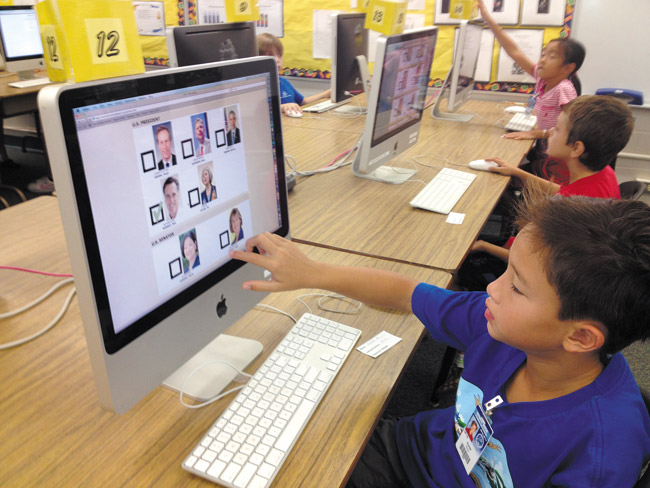A Few Lessons From Young Voters
I’ve always had a fascination with the 1960 presidential election. It was before my time, but the effect of the first televised presidential debates between John F. Kennedy and Richard Nixon was such an intriguing subject, I wrote my Honors thesis at UCLA about the debates 45 years after the fact.
Coincidentally, the 1960 presidential election was the first for Hawaii voters. The turnout, according to Hawaii Office of Elections statistics, was 93.1 percent.
Fast forward to the 2012 primary election: 41 percent voter turnout.
What went wrong?
Controversial issues and hot races on the ballot don’t seem to matter.
I saw several frail seniors with canes walking into their polling place. That’s how important it is to them. Why do so many others grumble but not bother to vote?
I went to vote and talked about it with my two children.
My 5-year-old son asked, “Mommy, why do people vote?”
Hmm, I can ask candidates tough questions as debate moderator, but my son’s seemingly simple question stumped me how to articulate
the concept to a child.
“So we can pick the people who run things,” I replied.
I should have Linda Coble on speed dial. Hawaii’s first anchorwoman now passionately volunteers as board chairwoman for We Vote Hawaii, formerly known as Kids Voting Hawaii.
Coble fondly shares memories of the project’s first year in 1996. She recalls looking over a third-grader’s ballot and telling him, “You forgot to vote in the mayor’s race.”
Coble chuckles as she repeats his reply: “There wasn’t a candidate who interests me.”
Some quick takes on the 2012 vote by Hawaii students:
* 120,066 K-12 students cast ballots.
* They elected Duke Aiona governor, not Neil Abercrombie.
* They would have sent Charles Djou to Congress over Colleen Hanabusa.
* They also voted on relevant subjects such as school bullying, whether cafeterias should serve more fruits and vegetables, and whether their parents vote.
The first students who took part in 1996 are now old enough to vote for real. One of them certainly had a candidate who “interested him” — his dad.
David Ige’s youngest son Matthew, a Kids Voting alumnus, voted for the first time during the primary election. When I interviewed him outside Honolulu Hale, he told me about supporting his dad for governor: “I think it’s really great that my first time voting is in support of his first statewide election.”
We Vote Hawaii is a great tool to encourage voter engagement early, even if you don’t have a family member running for office. Another advantage? The results are ready to reveal as soon as the election polls close at 6 p.m. on election day.
This is truly an instance when adults could learn a lesson from their children.
For more information, go to wevotehawaii.org.
Ballots are expected to go online after Sept. 5, with voting taking place between Oct. 20 and Nov. 4.
tjoaquin@hawaiinewsnow.com






